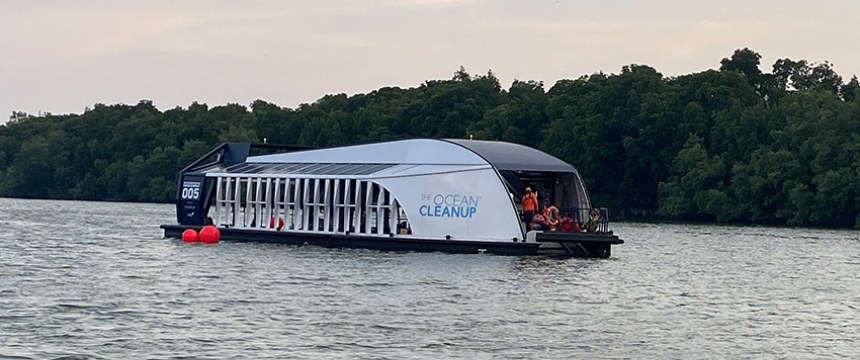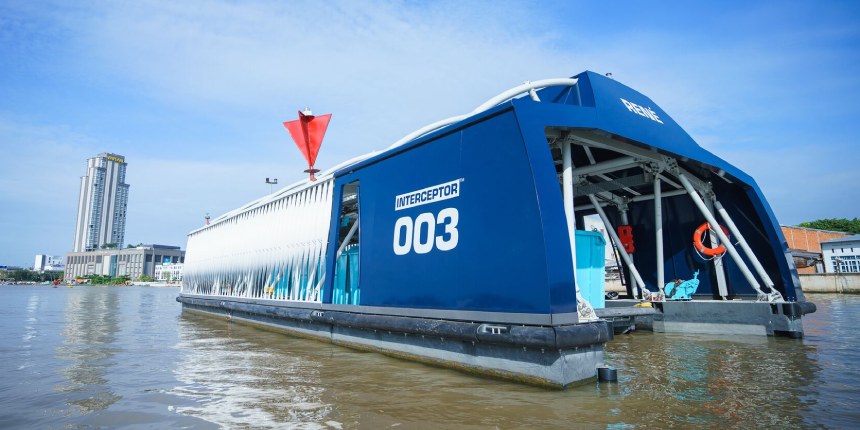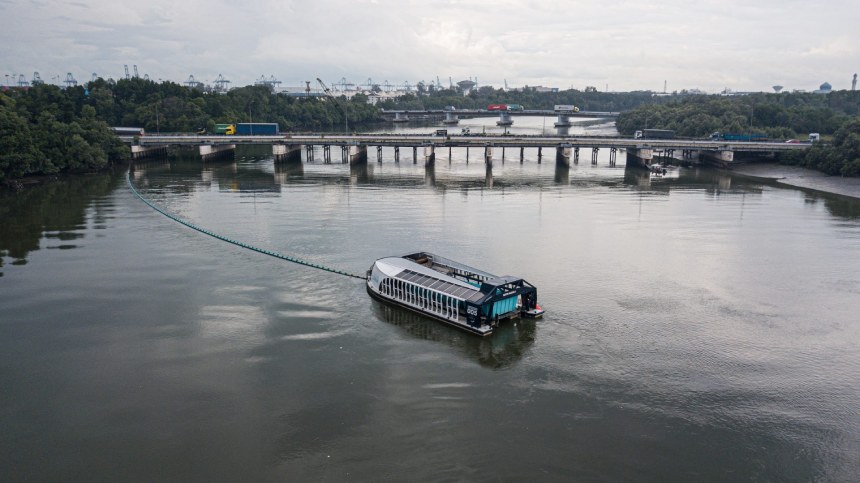VESSEL REVIEW | INTERCEPTOR 003 – AUTONOMOUS CATAMARANS TAKE ON RIVER CLEANUP DUTIES IN SOUTHEAST ASIA
July 1, 2022 Maritime Safety News
The newest pollution-collecting vessels in the fleet of Netherlands-based non-profit The Ocean Cleanup have begun undergoing a series of tests in Vietnam and Malaysia to allow their performance to be evaluated under operational conditions.
The tests on sisters Interceptor 003 and Interceptor 005 include an ongoing project where the vessels are being used to collect rubbish on the surfaces of rivers in the two countries. Interceptor 003 has been operating on Vietnam’s Can Tho River since December 2021 while Interceptor 005 has been deployed on the Klang River in Malaysia since earlier this month. The vessels have been placed in strategic locations in these rivers to make sure the main plastic flow is intercepted while still allowing other boats to pass.
Like their sister vessels, Interceptor 003 and Interceptor 005 are each fitted with a floating barrier that extends towards the front for funneling waste through the vessel’s mouth. River waste flowing with the current is guided by the barrier towards the opening of each vessel, eliminating the need for additional machinery to be used for actively removing waste from the surface of the water. All electronics on each vessel – including the conveyor belt, shuttle, lights, sensors, and data transmission – are solar-powered, thus further reducing reliance on carbon-emitting generators.

Thanks to the vessels’ catamaran design, the water flow path is optimised to pass through the system, carrying the plastic onto the conveyor belt. The conveyor continuously extracts the debris from the water and delivers the waste to a shuttle that automatically distributes the debris across six dumpsters. Using sensor data, the containers are filled equally until they reach their full total capacity of 50 cubic metres. The Ocean Cleanup claims that, under optimal operations, each vessel can extract up to 50,000 kilograms of plastic per day.
The vessels can work autonomously even for 24 hours straight until their onboard storage becomes full, though they can continue extracting debris even as their six 8.3-cubic-metre dumpsters are being emptied. When a vessel is almost full, it automatically sends a text message to the local operators to come and collect the waste. Operators then remove the vessel’s lower barge assembly, bring it to the side of the river, empty the dumpsters, send off the debris to local waste management facilities. The barge can be quickly and easily reinstalled in the vessel to resume regular rubbish collection operations afterwards.

The Ocean Cleanup said the newer vessels also feature key improvements over the older vessels in its fleet. These include: a conveyor belt being widened to 2.5 metres to allow for a less obstructive flow and better distribution to the dumpsters and a widened hull and dumpsters to make the transfer of rubbish from the conveyor to the dumpsters easier and more effective. The vessels’ monocrystalline solar cell panels and smart energy storage system are also smaller but just as efficient as those of their predecessors.
The catamaran design also helps facilitate containerisation and fast deployment thanks to its modular construction that allows for easy assembly and disassembly.
Interceptor 003 and Interceptor 005 were built by Finnish company Konecranes via its various local partners in Southeast Asia on behalf of The Ocean Cleanup.

Source: https://www.bairdmaritime.com/work-boat-world/small-craft-world/pollution-rubbish-cleanup/vessel-review-interceptor-003-autonomous-catamarans-take-on-river-cleanup-duties-in-southeast-asia/





